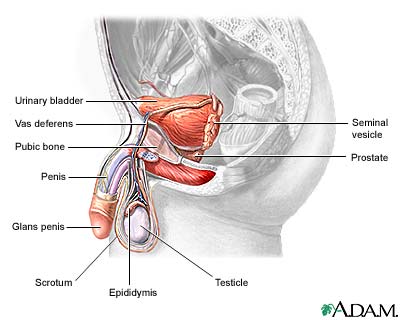Treatment
Usually the testicle will descend into the scrotum without any intervention during the first year of life. If this does not occur, the child may receive hormone injections (B-HCG or testosterone) to try to bring the testicle into the scrotum.
Surgery (orchiopexy) is the main treatment. Earlier surgery may prevent irreversible damage to the testicles. This damage can cause infertility.
Prognosis (Expectations)
Most cases get better on their own, without any treatment. Medical or surgical correction of the condition is usually successful.
About 5% of patients with undescended testicles do not have testicles that can be found at the time of surgery. This is called a vanished or absent testis.
Complications
If one or both testicles do not descend, a man may be infertile later in life. Men who have an undescended testicle at birth are at higher risk of developing testicular cancer in both testes. Surgery to correct the problem may result in damage to the testicle.
Calling Your Health Care Provider
Call your child’s health care provider if he appears to have an undescended testicle.
Call your provider if you are a male, 15 years or older and you are unsure how to perform testicular self-examination (TSE) to screen for testicular cancer.
Pictures & Images
Male reproductive anatomy
-
Undescended testicle: Overview, Causes
-
Undescended testicle: Symptoms & Signs, Diagnosis & Tests
-
Undescended testicle: Treatment
Review Date : 9/22/2009
Reviewed By : Linda J. Vorvick, MD, Medical Director, MEDEX Northwest Division of Physician Assistant Studies, University of Washington, School of Medicine; Louis S. Liou, MD, PhD, Assistant Professor of Urology, Department of Surgery, Boston University School of Medicine. Also reviewed by David Zieve, MD, MHA, Medical Director, A.D.A.M., Inc.
